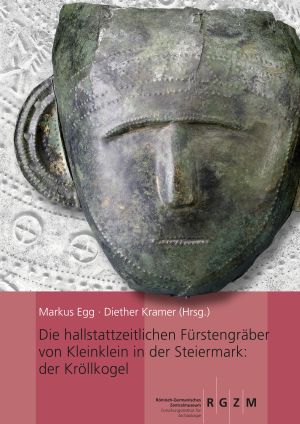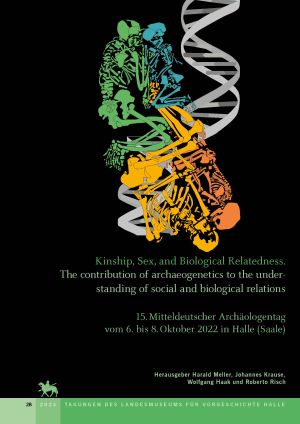Wiltschke-Schrotta, Karin
Die hallstattzeitlichen Fürstengräber von Kleinklein in der Steiermark: der Kröllkogel
Die Fundstellen rund um den Burgstallkogel zwischen Großklein und Gleinstätten in der Weststeiermark zählen zu den herausragendsten der älteren Eisenzeit Österreichs und Mitteleuropas. Das Zentrum bildet die Höhensiedlung am Burgstallkogel, zu dessen Füßen sich die Sulmtal-Nekropole mit heute noch ca. 700 Grabhügeln ausbreitet.
Deutlich von ihr abgesetzt fanden sich auf der ersten Flussterrasse des Saggautals bei Kleinklein die vier reichsten Fürstengräber des gesamten Osthallstattkreises. Die meisten Funde wurden bereits im 19. und beginnenden 20. Jahrhundert geborgen. Eine erfolgreiche Nachgrabung von 1995 im jüngsten Fürstengrab, dem sogenannten Kröllkogel, gab den Impuls zur vorliegenden Neubearbeitung und Neubewertung des Prunkgrabes. Um dieses Ziel zu erreichen, schlossen sich das Universalmuseum Joanneum in Graz und das RGZM zusammen und organisierten eine interdisziplinäre Forschergruppe, die alle Aspekte des Fundes untersuchte.
Kinship, Sex, and Biological Relatedness : The contribution of archaeogenetics to the understanding of social and biological relations. 15. Mitteldeutscher Archäologentag vom 6. bis 8. Oktober 2022 in Halle (Saale)
Zwischenmenschliche Beziehungen sind seit jeher die Grundlage gesellschaftlichen Zusammenlebens. Der Verwandtschaft – ob biologisch oder sozial – kommt dabei eine ganz besondere Bedeutung zu. In der Archäologie konnten diese immateriellen Verbindungen bisher nur selten zweifelsfrei nachgewiesen werden. Die Archäogenetik hat jedoch in den letzten Jahren Methoden und Verfahren entwickelt, die es bei guter DNA-Erhaltung erlauben, den Grad genetischer Nähe zwischen zwei Menschen zu bestimmen, die in der Vergangenheit gelebt haben.
Die hier gesammelten Beiträge schöpfen ihr Wissen zum Thema Verwandtschaft aus Anthropologie, Archäologie, Genetik sowie der Geschichts- und Sozialwissenschaft. Sie verdeutlichen anhand von aktuellen oder bereits bekannten Fundplätzen, welche Rückschlüsse die neuen naturwissenschaftlichen Erkenntnisse einerseits ermöglichen, zeigen andererseits aber auch deren Grenzen bei der Interpretation von (prä-)historischen Gesellschaften auf.








